
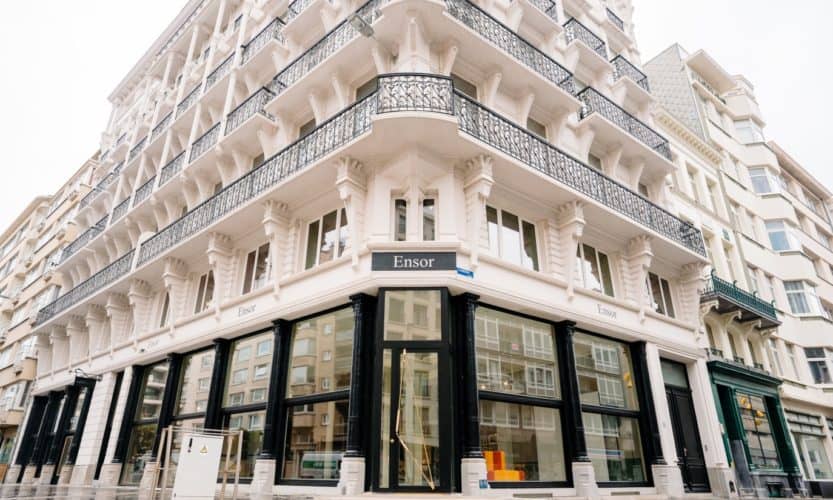
Recently, the James Ensor House in Ostend officially reopened its doors to the public in a fully renewed experience centre. This wholly refurbished experience will shed new light on James Ensor’s life, his artworks and his love for the city where he lived until he passed away: Ostend.
In the interest of discovering your own country, I decided to visit this new James Ensor House. In this post, you will read everything about my experiences; the good, the bad and the ugly.
Spoiler alert: there’s a whole lot of good and almost no bad or ugly.
Skip ahead:
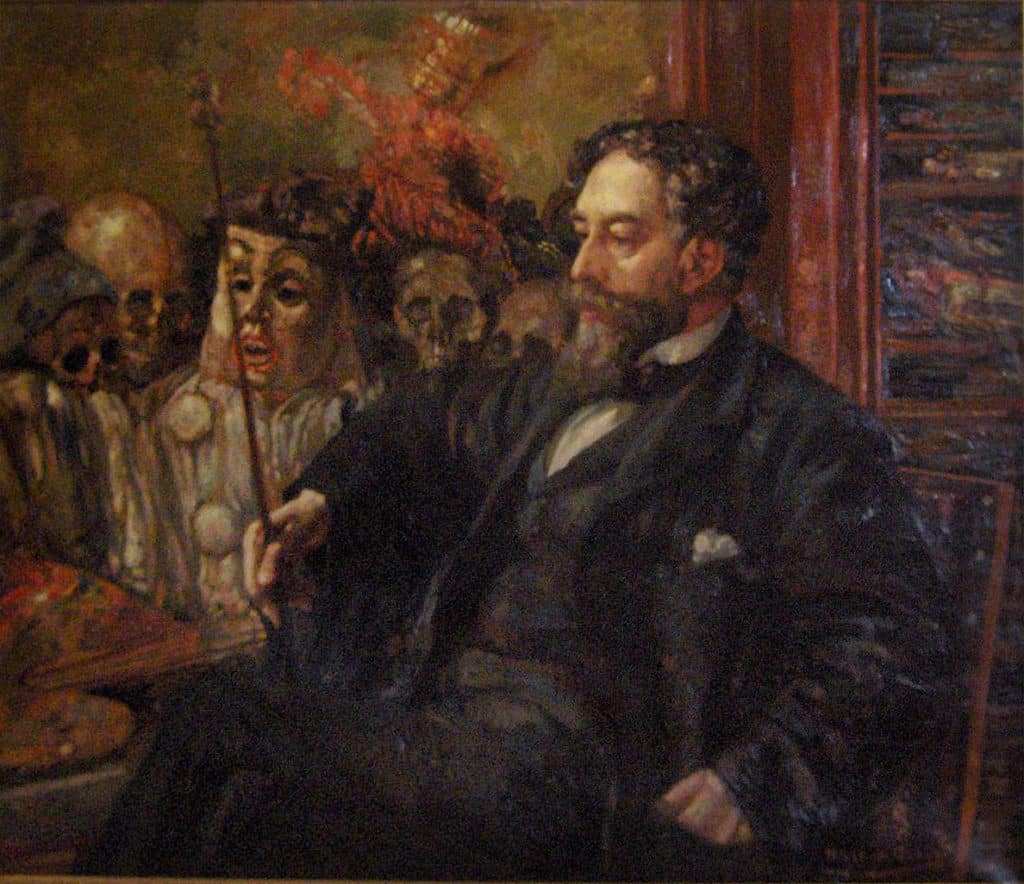
Since I know you didn’t come here for a history lesson, I’ll just give you the quick summary.
James Ensor was born in 1860 to English parents. He initially studied engineering, but quickly lost interest and left school at the age of 15 to pursue his passion for art. Eventually, he would go on to study at the Académie Royale des Beaux-Arts in Brussels, but he didn’t care for the rules and conventions of the Academy.
After leaving the Academy in 1880, Ensor started using the attic of his parents’ house as his art studio. In his artwork, nothing is off-limits – Ensor made his own rules. Critics regarded much of his work at this time as scandalous.
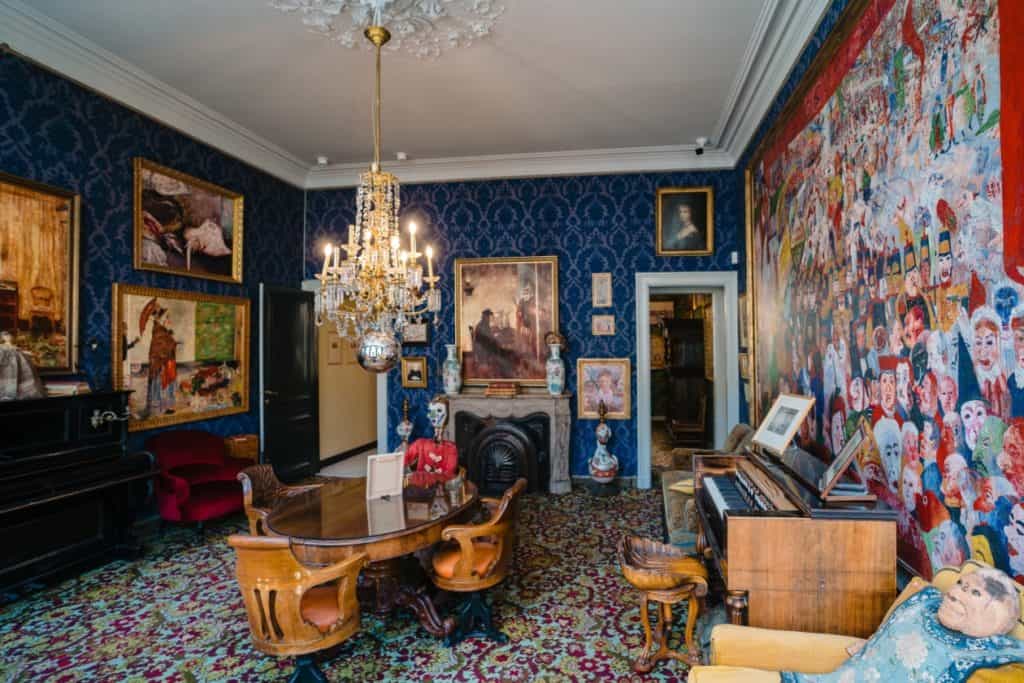
In 1888, Ensor painted his most famous work of art: Christ’s Entry into Brussels in 1889.
Ensor died, unmarried, at the age of 89 in Ostend.
Today, his works of art are on display in many leading museums around the world, including the Rijksmuseum (Amsterdam), the Musée du Louvre (Paris), the Museum of Modern Art (New York) and the J. Paul Getty Museum (Los Angeles).
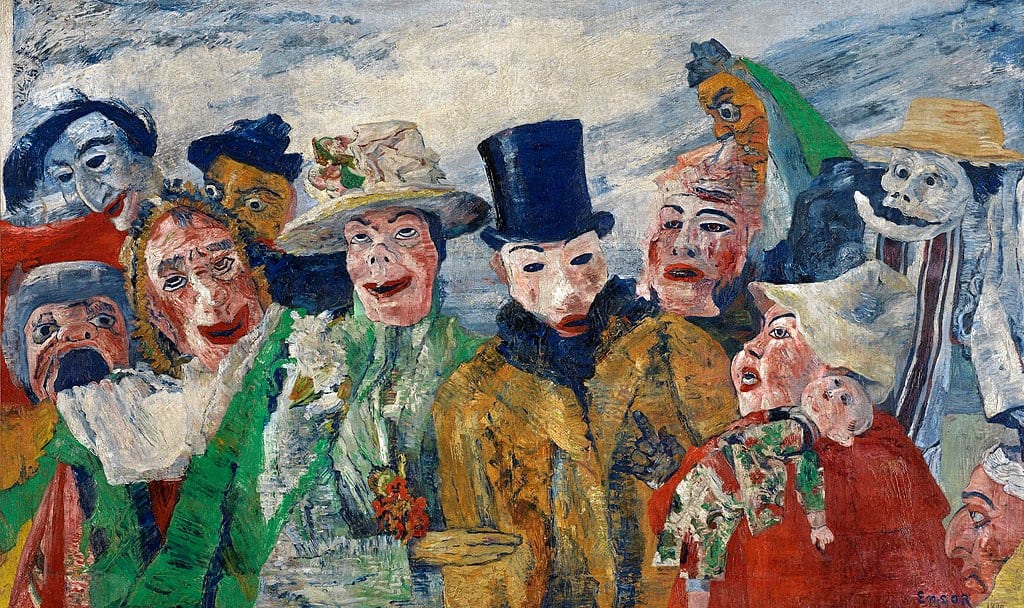
Ensor’s paintings are easy to recognise by the depiction of skeletons, carnivals, puppetry and masks (which were inspired by the masks sold in his mother’s gift shop).
These works of art can best be described as eccentric and rebellious, a perfect representation of his life in and of itself. Through his art, Ensor criticised the establishment and expressed his outrage at concepts like hypocrisy, abuse of power and injustice.
In the late 19th century, Ensor eventually came into his most creative period. Although he was an atheist, Ensor often referred to and resonated with the suffering of Christ in his paintings.
James Ensor was, and for many remains to be, one of the unsung heroes of modern art. He was one of the driving forces behind artistic styles such as expressionism and surrealism.
If you call the James Ensor House a museum, I guarantee that you’ll get a few dirty looks from the people who work there.
I’m just saying.
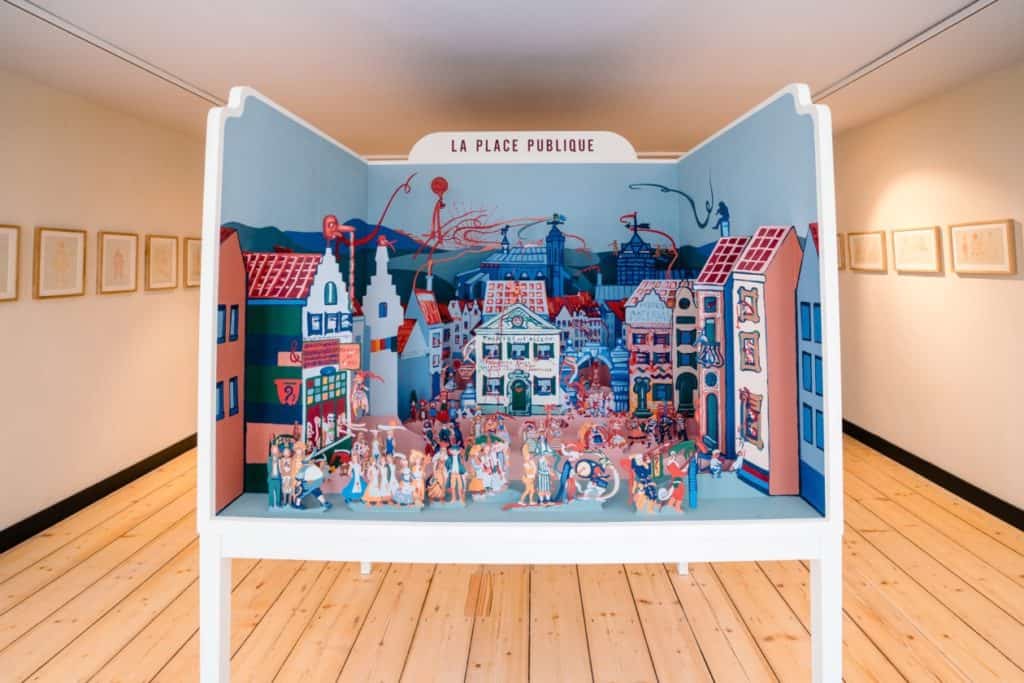
The new James Ensor House is an interactive experience centre where you can learn about Ensor’s life in a new and exciting way.
Originally, the Ensor Museum was a small museum dedicated to the artworks of James Ensor, but a recent renovation and purchase of the neighbouring building gave this place a major upgrade.
Today, a tailor-made audio guide walks you through five rooms in the James Ensor House, each one dedicated to one specific aspect of Ensor’s life and art. Also included are accurate reconstructions of the house where Ensor lived most of his life, with authentic furniture and artworks.
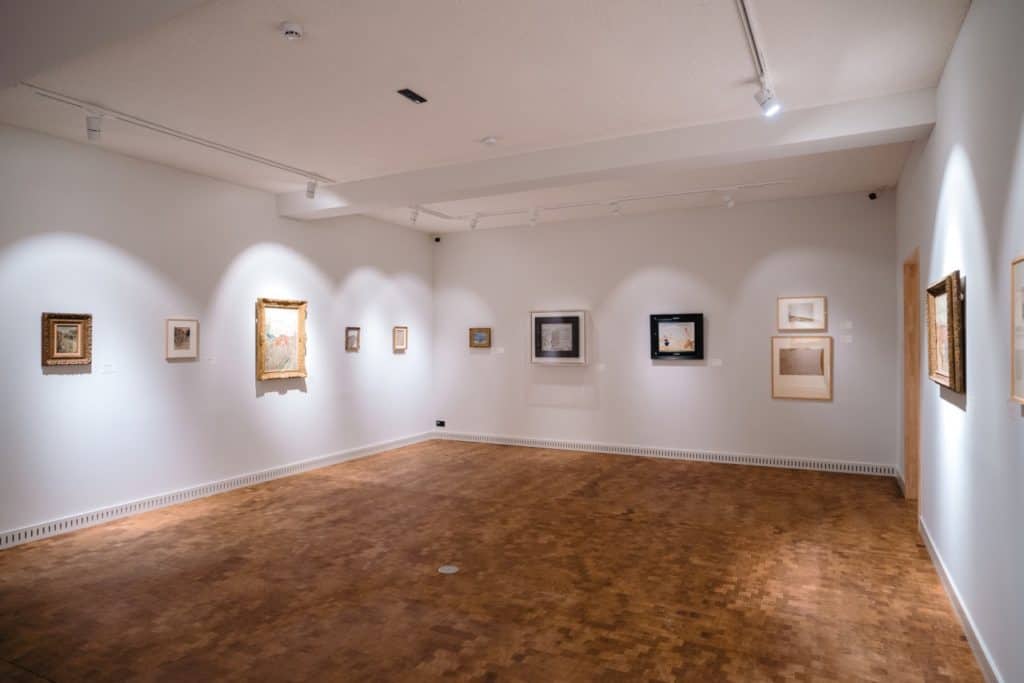
Your visit comes to an end in the museum itself, where real works of art painted or sketched by Ensor are on display.
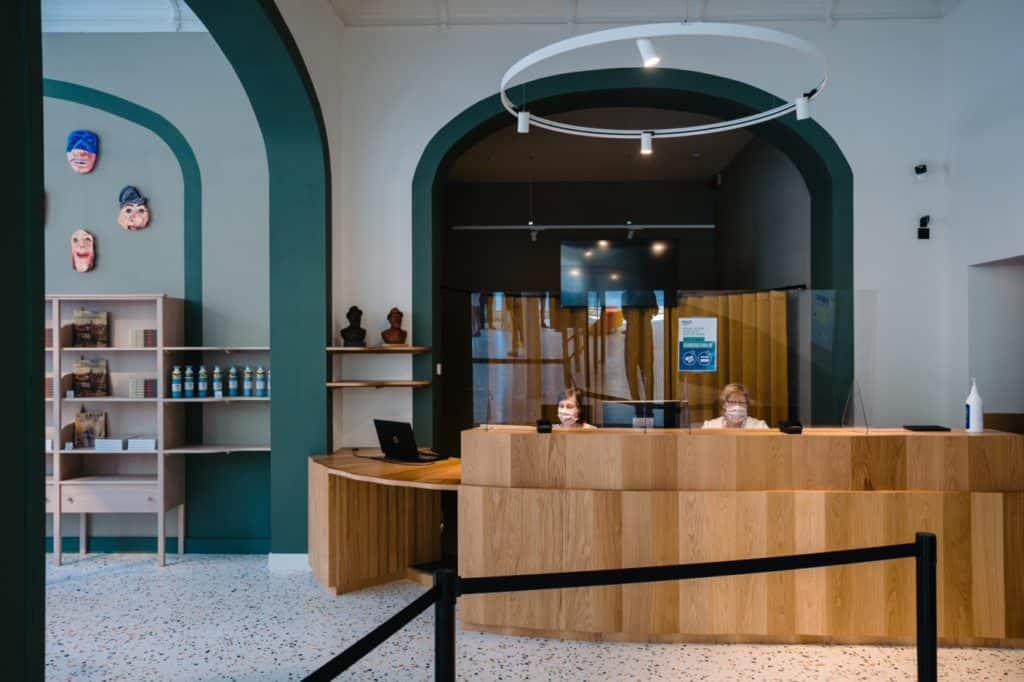
There are a few different ways to get to the James Ensor House:
If you’re not coming by train or by car, pop the following address into your favourite navigation app and follow the directions.
Vlaanderenstraat 29, 8400 Oostende
Since James Ensor spent most of his life living in Ostend, it should come as no surprise that the city decided to highlight this artist with other initiatives than the James Ensor House.
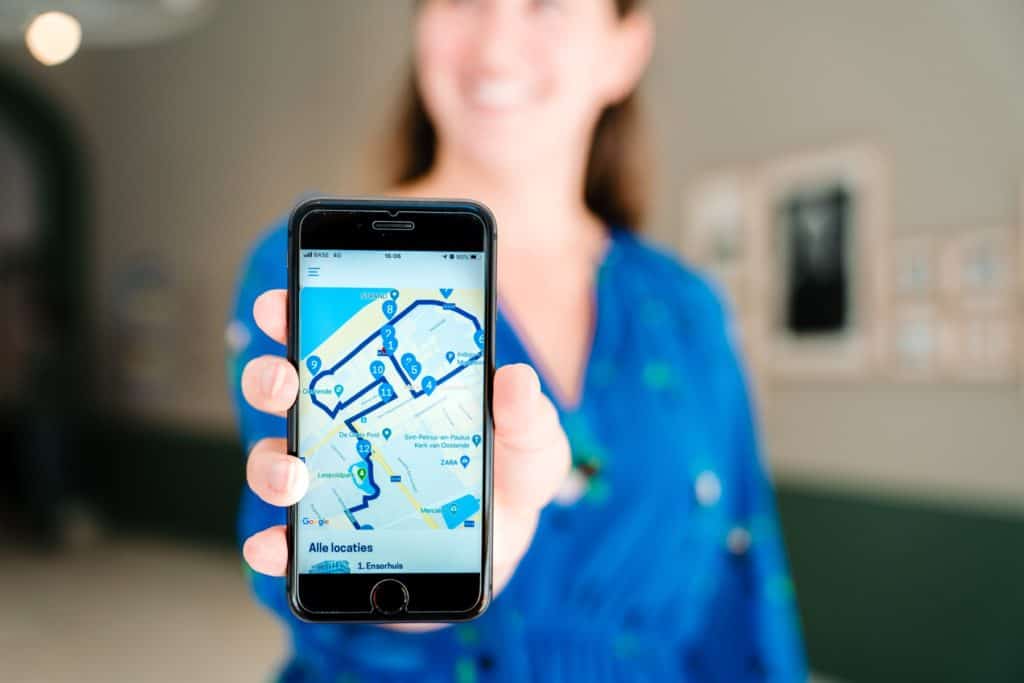
Along with the opening of the James Ensor House, Visit Oostende developed a brand new Ensor-themed walk that takes you to all the locations that played a major role in the artist’s life.
The app that accompanies this walk enables visitors to see the City by the Sea through Ensor’s eyes.
The tour is guided by Ensor himself, who talks about his own tumultuous life, his many friends and the city that stole his heart.
Best of all: the tour is free for anyone who purchased a ticket to the James Ensor House. However, if you only want to do the tour, you’ll have to pay a one-time fee of €5,49.
The app is available in five languages (English, Dutch, French, German and Spanish) and is free to download in the App Store.
Related: The 20 best apps for solo travellers
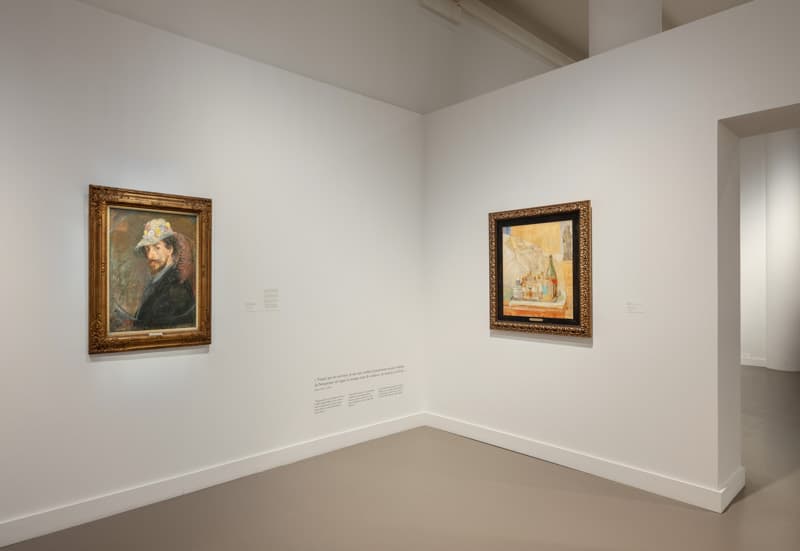
Mu.ZEE (Ostend’s museum of modern art) has an entire wing dedicated to the works of James Ensor and Léon Spilliaert, another renowned painter from Ostend.
The exhibition, which is titled Two Masters of Ostend, aims to let artworks by Ensor and Spilliaert take the visitor back in time, to the Ostend they knew and loved.
Every work of art on display in this exhibition is accompanied by one or more anecdotes, recounting the lives of people like Edgar Allen Poe and Willy Finch.
If you’re still looking for more information for your visit to the new James Ensor House, check out these websites:
PIN IT!
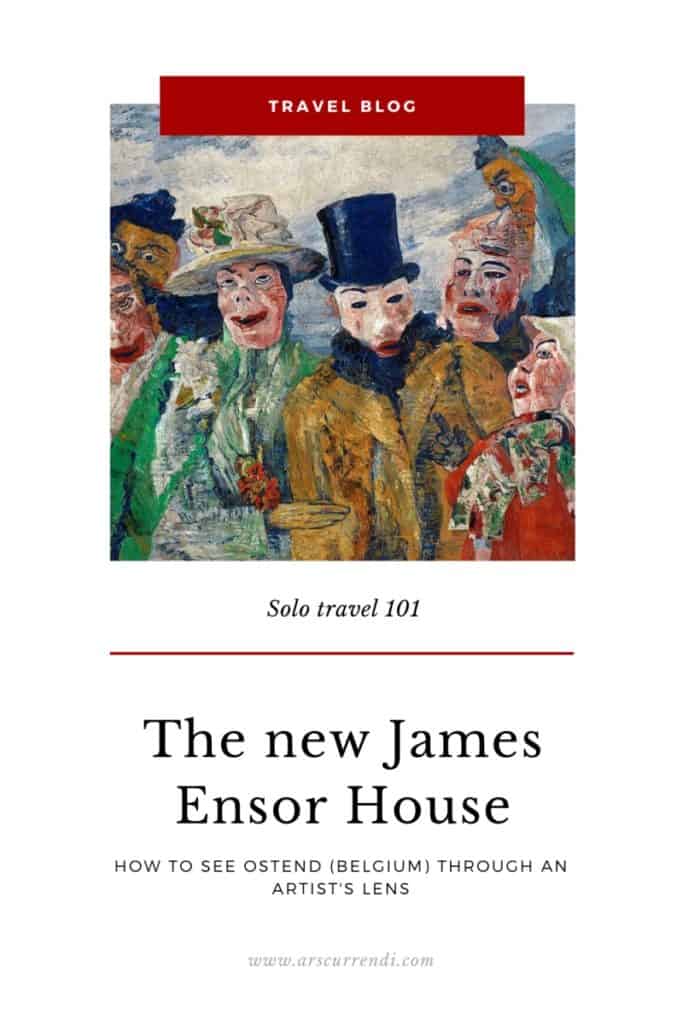
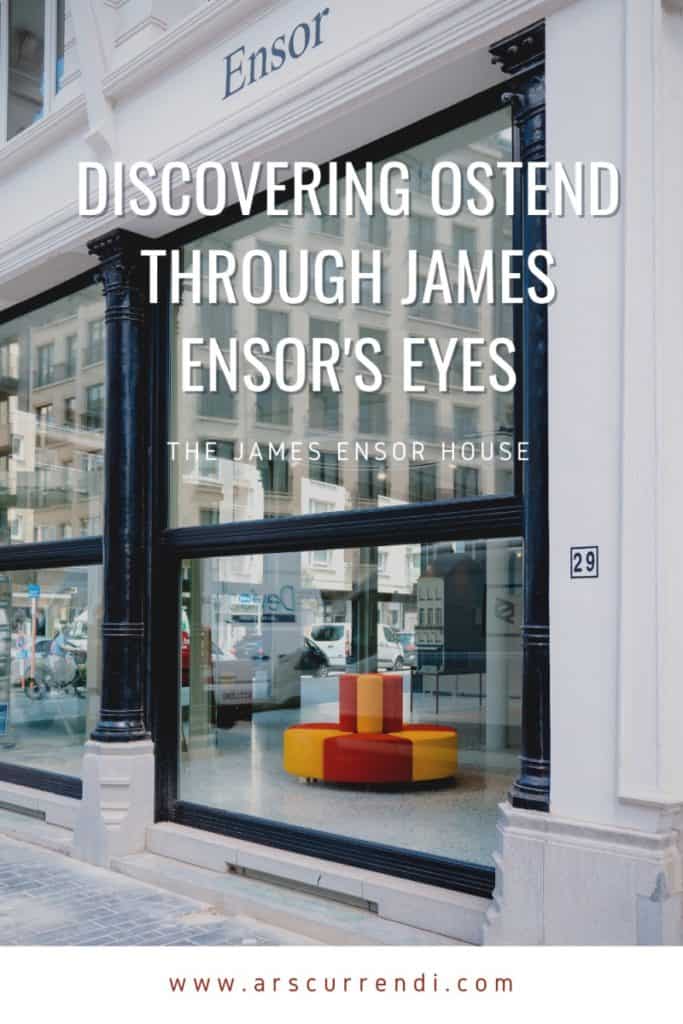
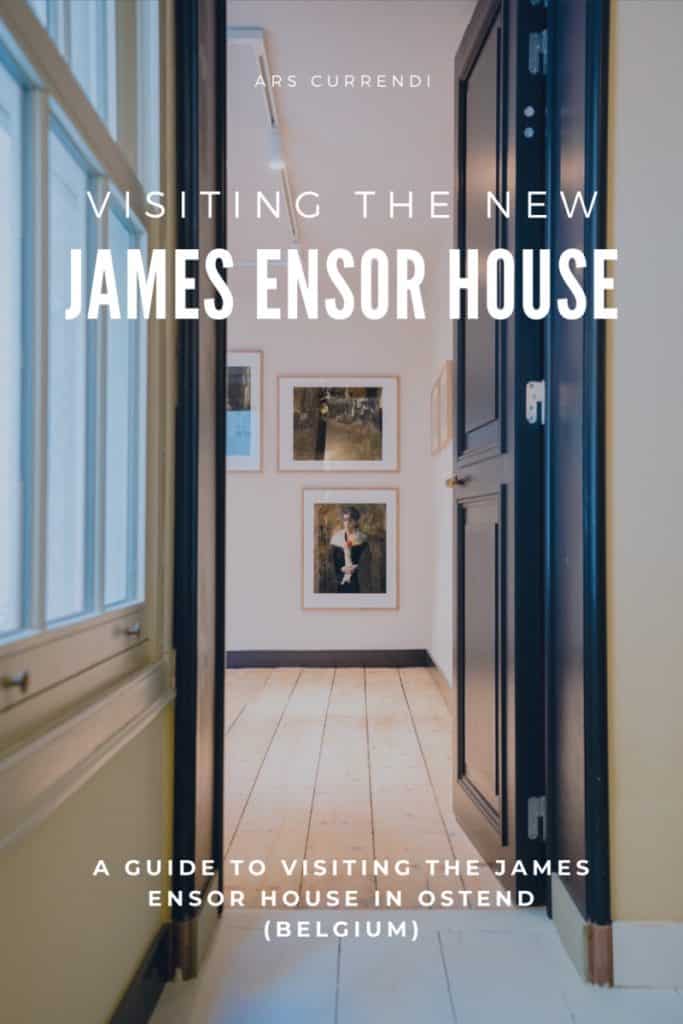
Image credits:
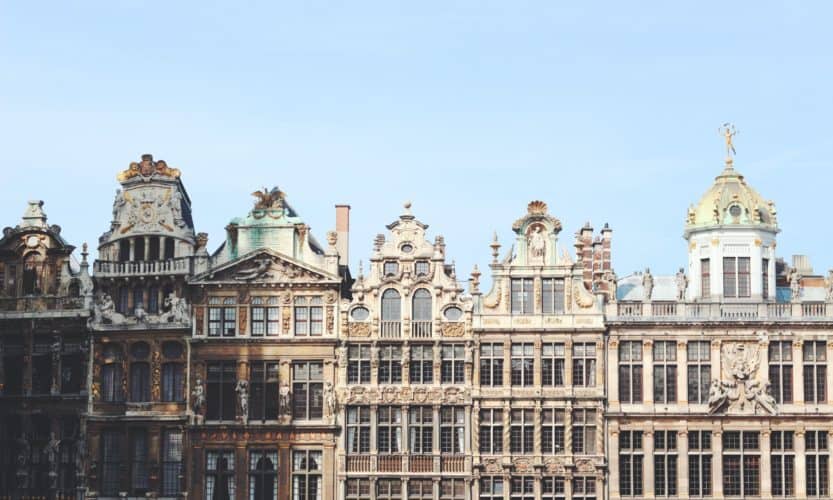
Belgium is a country that is often skipped or used as a stop between other major European cities, such as Paris and Amsterdam. I’m here to convince you that cities in Belgium are worth visiting, too.
Belgium has so much to offer, so it would be a shame to ignore its existence when building a European travel itinerary. We have it all: food that makes your mouth water, beers that have been brewed since the Middle Ages, ancient castles and cobbled streets in medieval cities.
Still wondering why this country is worth exploring? Let me go over some of my favourite cities in Belgium and convince you too.
Skip ahead with these links:
How could I start an article about the best Belgian cities and not mention the big B?
Brussels is Belgium’s capital, and if there’s one Belgian city travellers flock to by the thousands, it’s this one.
And there are some good reasons to add Brussels to your Belgian itinerary. Stunning Art Nouveau architecture, impressive museums and a groovy jazz scene are just a few of the things that might convince you.
Among locals, Ghent is mostly known as one of the major student cities in Belgium. But it’s actually much more than that.
Ghent is vibrant, quirky and welcoming to foreigners. It’s budget-friendly, eco-friendly and child-friendly. Ghent spans the bridge between historical and contemporary, and it does that better than any other city I’ve been to.
And no, I’m not overselling the city. I love Ghent with all my heart, and I would recommend it to everyone who hasn’t been to Belgium yet. (And even to people who have visited Belgium in the past!)
Read more: Ghent City Guide, As Told By A Local
As Belgium’s second-biggest city, Antwerp is still too often overlooked by travellers. And that’s a pity.
Antwerp is, beyond a shadow of a doubt, the Belgian capital of cool. The city is filled to the brim with trendy clubs, unique restaurants, authentic vinyl record shops, interesting museums, and more.
As if that wasn’t enough, strolling through Antwerp is also a treat for architecture lovers. The central station is one of the world’s most revered railway stations and the gems of Art Nouveau, Jugendstil and Neo-Classicism can be found all over the city centre.
Oh, and did I mention that Antwerp is the diamond capital of the world?
Read more: Best Restaurants in Antwerp: The Ultimate Foodie Guide
Another city that is often overlooked by people from outside of Belgium, and even by people who were born here.
Admittedly, there won’t be as many things to do in Charleroi as in other Belgian cities, such as Bruges and Ghent, but what the city lacks in activities, it more than makes up for in character and history.
If you want to venture even further off the beaten path, go for a walk along the city’s canal and discover Charleroi’s history through its (often abandoned) industrial buildings.
Although it is considered one of Belgium’s major cities, you might have never even heard of it if you’re not from around here.
So, when you’re wondering which cities to visit in Belgium, you probably weren’t considering Liège. But you should be.
Liège (or Luik in Dutch) is one of the cultural hotspots of Belgium. There’s a great opera building, a critically acclaimed philharmonic orchestra and countless events highlighting photography, poetry, music and other art forms.
This city is the place to be to discover how different cultures have influenced major Belgian cities in an authentic setting, without thousands of tourists around you.
Just because Durbuy is the smallest city in the world doesn’t mean it’s not worth a visit. On the contrary: if you explore Durbuy, you’ll find yourself wandering along an inviting labyrinth of winding cobbled streets that will transport you back in time a few hundred years.
As the city is located in the forest of Belgium’s French-speaking region, Wallonia, there are plenty of adventurous activities to try out in and around Durbuy.
Mountain biking, hiking, kayaking, caving, … If you can dream it, you can probably do it in Durbuy.
Even if you didn’t know this was a town in the Belgian Ardenne region, Spa is definitely a word you’re familiar with.
The world’s original spa resort could be found here. It was so popular that Spa became the generic term in English used to describe hydrotherapy.
But Spa is more than a glorified wellness town. Just outside the city centre, you can take a walk in nature reserves, you can go open-air karting and you can visit the oldest casino in Europe.
There’s so much to say about Leuven that I already know I’m going to struggle fitting it all in this small text, but I’ll try.
Leuven is one of Belgium’s main university cities. But it’s much more than that: Leuven has a medieval history, fascinating landmarks, a unique atmosphere and many places that are listed as UNESCO World Heritage.
Delve into the city’s student culture by having a beer at the Oude Markt, drinking coffee and eating biscuits at the university hall and visiting the historic university library and tower.
They don’t just go around calling any city the Venice of the North. It’s a nickname that has to be earned. And I’ll be damned if Bruges hasn’t earned it.
The city centre is mostly characterised by its picturesque canals and historically accurate building façades. Cobblestone bridges and streets complete the dreamy picture. The atmosphere you feel when walking around here is truly unmatched, even far beyond Belgium’s borders.
Don’t be discouraged by the small size of Bruges: most, if not all, of the people who visited the city before you will recommend it.
Looking for a specific Bruges travel guide? Check out the linked article over at Pink Luggage Abroad.
In Flanders Fields the poppies blow… And in Ypres you can learn all about that.
Ypres is arguably one of the most significant cities in Belgium in the context of the First World War, and much of the city’s tourism efforts still refer to that. For example, the Last Post is still sounded at the Menin Gate at 8 pm to remember the fallen soldiers of the British Empire and its allies.
Before you attend this daily act of homage, though, you can do several things in Ypres. Learn about the Great War at In Flanders Fields museum and the Yper museum, have a bite to eat at Les Halles, coffee at Mimi’s and take a walk along the ramparts.
Tongeren is truly one of Belgium’s best hidden gems for history buffs. As the oldest city in Belgium, founded by the Romans themselves in 15 B.C., it’s got plenty of interesting history for you to discover.
Head over to the city’s most prized museum, the Gallo-Roman museum, to learn about human life in Tongeren, from the prehistory to the Roman period.
Alternatively, head to nature reserve De Kevie just outside the city to really disconnect and take a walk without being bothered by anyone or anything.
After that, head to the Basilica of Our Lady to admire one of the largest collections of religious art in and around Belgium at Teseum.
Finish your day at one of Tongeren’s many restaurants, where you can sample local culinary delight.
Although it’s the capital city of Belgium’s southern and French-speaking region, Wallonia, Namur is yet to break through to the big audiences.
Founded as a trading settlement in Celtic times, Namur went through a period under Roman rule, until it gained recognition when the Merovingians built a citadel overlooking the city. If you didn’t know any better, you might think this was the castle on the hill Ed Sheeran was singing about.
Namur also has a number of heritage sites of military, architectural and religious significance. Some examples include the Citadel, the forts, the Belfry and the Cathedral of St.-Aubain.
Aalst is a city that’s world-famous in Belgium, but not so much outside of this small country.
Aalst is the city of onions (yes, that’s a good thing, at least if you ask the locals) and it’s also the city of the biggest — and most notorious — carnival celebration in Belgium.
When you’re here, you won’t see many other foreigners strolling through the city, unless you visit during Aalst Carnaval. Things tend to get a little crazier during this one weekend in February.
Don’t say I didn’t warn you!

At a train ride of just over one hour from Brussels and with a population of 77 thousand, Hasselt is like the younger brother of many Belgian cities.
Cultural and culinary hotspots are sprawled all along the city centre, and you can even learn about fashion and jenever (gin’s less famous predecessor) in dedicated museums.
If that’s not your thing, be sure to head to the largest authentic Japanese gardens in Europe, which are world-famous – at least in Belgium.
Kortrijk is the perfect day trip from any of the major cities in Belgium (Brussels, Antwerp, Ghent and Bruges). It only takes about an hour to get there from Brussels, and there are plenty of things to do, visit, see and eat.
One of the most impressive hidden gems in Kortrijk is Baggaertshof. Founded in 1638 by three sisters, Baggaertshof comprises an inner courtyard, twelve small houses and a gatehouse for poor widows and unmarried women. Today, this is a protected monument and it is often referred to as the ‘second beguinage of Kortrijk’.
For lunch or dinner, Kortrijk has a large variety of restaurants, bistros and eateries. Whether you’re looking for a vegetarian burger, an organic dish or just a good old steak, this city has got you covered.
Located in Belgium’s southern, French-speaking region, Dinant is a city that is packed with history due to its strategic location on the Meuse river. Even today, fortresses, old buildings and a citadel act as reminders of the city’s often bloody history.
Speaking of the Meuse river, take a walk along its banks and you’ll be reminded of the colourful houses in Danish harbours, but slightly more European. (Does that even make sense?)
And, of course, it wouldn’t be a Belgian city if there wasn’t a museum dedicated to one of our national vices: beer. Visit Maison Leffe to find out more about the story behind one of Belgium’s most famous and widespread trappist beers.
Last, but definitely not least, Dinant is the perfect base to discover Belgium’s greenest, most adventurous region: the Ardennes.
Ah, Mechelen. Granted, I may be a bit biased in suggesting this city because I study here, but still. It’s less than half an hour away from Brussels, and it’s packed with things to do.
Start by climbing St. Rumbold’s Tower‘s 538 steps to get the best 360° bird’s eye view of the city. Next, try my personal favourite beer, Gouden Carolus Tripel, at Het Anker brewery. Don’t miss a visit to the Dossin Barracks, which were used as a waiting room for death for more than 25,000 Jews and gypsies during the Second World War.
Finish your visit to Mechelen at the Vismarkt – Fish Market, in English – to blend in with the locals and find Mechelen’s trendiest places to eat, drink and dance until the early hours.
Oostende is known colloquially as the queen of the Belgian seaside cities, and that’s not an accident. It’s definitely the liveliest city along the Belgian coast, and it’s located right in the centre.
The city centre has historic roots that go back to the middle ages, but today, it is modern and eccentric. There is a huge street art walk through the whole city, and more locations are added each year. There are plenty of other themed walks, so there is definitely something for everyone.
If you’re into art, you may also want to check out the renewed James Ensor House – the house where painter James Ensor worked and lived, preserved in its original state.
When it’s time to grab a bite, try Histoires d’O‘s home made shrimp croquettes, head to Moose for a fantastic Scandinavian-themed lunch or try one of Café Botteltje‘s sixteen tap beers.
When you go to De Haan, you’re really there to relax. Since there’s not that much to do here, you might as well disconnect, put your phones away and enjoy each other’s company.
Go for a walk on the beach, rent a bike and discover your surroundings with your loved ones. Head to Aan Tafel or B.A.Z. for dinner, and count on your own B&B for a fabulous breakfast the next day.
Nieuwpoort (or New Port, as it might be translated to English) is one of my favourite coastal cities in Belgium. And, the funny thing is, I can’t really seem to explain why.
It’s just a vibe I get when I visit this city. It’s urban, but quiet. History is all around you, but the city still feels modern. I guess it’s just something you have to experience to understand what I’m talking about.
Either way, when you’re here, check out the fish auction and Jan Fabre’s giant golden turtle (yes, really!) called Searching for Utopia, and go shopping at the main shopping street.
If, after reading this, you’re still wondering which cities in Belgium are worth a visit, I don’t know what to tell you.
If, however, I have been able to spark your interest in Belgian cities, be sure to let me know! Tweet at me, leave a comment down below or send me a message.
PIN IT!



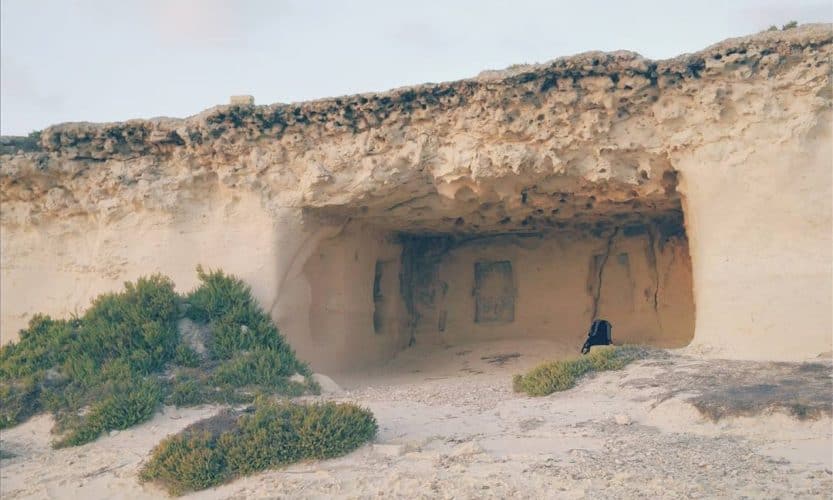
On my second solo trip ever, I slept on top of a cliff in Malta, overlooking the Mediterranean Ocean. I got to know the beauty of Wardija Punic Temple. If you want to have that same experience, keep reading.
If you’re ever in Malta, you really should consider giving Wardija a visit and maybe even sleeping there, overlooking the Mediterranean Sea and feeling the wind on your skin.
Disclaimer: since I took the photos in this post with my smartphone when I was visiting Malta in 2017, the quality won’t be great. I’m sorry about that, but there’s really not much I can do about it until I go back to Wardija.
Today, I’ll go over everything you need to know to experience this for yourself. How to get there, what to do, and why you should do it.
Let’s start with the basics.
The thing is, I’m not quite sure.
According to Wikipedia, Wardija Punic Temple – also known as Ras il-Wardija among the locals – is a promontory on the southeast coast of Gozo.
If you’re not sure what that means, that’s okay. Neither am I. I’d describe Wardija as a temple, a cave, an archaeological site – anything but a promontory. But that might just be because English is not my first language.
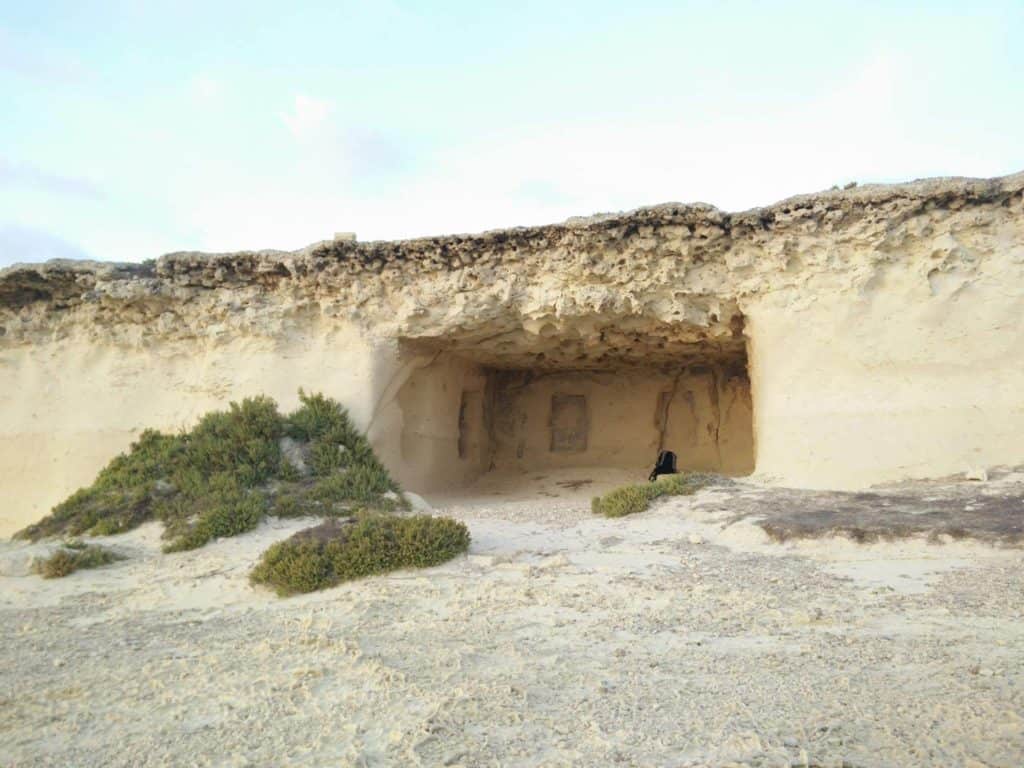
When my Airbnb host, Daniel (who’s now running a successful co-working space in Valletta, by the way), told me about this place, I was instantly sold to the idea.
Bonus: sign up to Airbnb through this link and get up to $40 of travel credit for your first booking!
He told me that someone who stayed in his Airbnb a few weeks before I did had discovered this place and had spent the night there. And so, Daniel told me everything I needed to know before sleeping at Wardija.
Now, I’m here to pass on my knowledge to you.
Make sure you bring some kind of blanket and something to sleep on, like a towel.
Here we go.
On the map below, you can see the exact location of Wardija Punic Temple. While this can be useful in and of itself, I’d also like to give you a little bit of explanation about how I got there, and how you can get there, too.
Arriving at this place is substantially easier if you have a rental car – or, better yet, if you’re from Malta and you have your own car available.
If you don’t, scroll down just a little bit and read more about getting there with public transport.
If you do, here’s what you want to do, supposing you’re coming from Malta’s capital, Valletta.
Preface: I would recommend departing from Valletta in the early afternoon if you want to be able to see the sunset. Not only that, but the last part of your journey would be quite dangerous without any sunlight.
That being said, you should look up when the sun sets on the day of your big adventure and leave at least four hours before that.
Side note: I’m aware that it’s a 40 minute walk, but it’s worth it. Trust me on this one.
Before starting your big trek from the Dwejra bus stop, you may want to consider doing a few things.
Firstly, take a look at the old site of the Azure Window. The steep rocks, the crystal blue water and the sharp cliffs in the background all look amazing and are worth some time.
You’ll be able to see this site from up above when you’ve arrived at Wardija, but it’s that much more impressive up close.
Secondly, have some dinner at the Azure Window restaurant. Unless you brought your own food, this is going to be your last meal until you get back to the civilised world tomorrow morning. (I had the pepperoni pizza and it was great)
To be honest, there’s not a whole lot to do here.
But there are some pretty great things that you can do here, and not in a lot of other places.
First of all, admire the views. Since there’s not much to do around you anyway, why not take some time to really take in the landscape around you?
I’ll just let the pictures do the talking here.
The photo above is the view from down below, looking at what used to be the Azure Window. Although it collapsed in a storm in 2017, it’s still gorgeous.
Aside from the actual image quality, this is one of my favourite shots I’ve ever taken. And that’s only partly because I have some very fond memories when looking back at this.
Next up: watch the sunset.
Just outside the temple, there are a few places where you can sit down, unwind, and enjoy the view of the sun setting over the ocean.
After the sun has set, now it’s time to really start doing things you’ve never done before.
Put on some good music and dance. Sing and dance like nobody’s watching.
You’re 40 minutes away from the nearest bus stop, so, chances are, nobody IS watching.
Finally, once you’ve danced your heart out – or once your phone battery dies, like mine did – it’s time to go to sleep.
When I was at Wardija, it took me about an hour to fall asleep. I had noticed beetles crawling out of a crack in the wall, and that unsettled me a bit. But if I can sleep through that, I’m sure you can, too.
I woke up around 6 am, and then again around 7 and around 8. I finally decided to get up around 8:30, and while I was brushing my teeth, a Spanish man and his daughter were hiking around. We talked for a little while and they were on their way.
Finally, I got back to my Airbnb by following the same route in reverse.
And that, dear friends, is the story of how I slept in a temple on top of a Maltese cliff (and how you can do the exact same thing).
Some more things to keep in mind:
Disclaimer: I tried to contact Mr Spiteri to ask for permission to post this article, but he hasn’t responded so far. If he does end up responding and doesn’t give me permission, I’ll delete this post.
Would you ever do something like this? If you wouldn’t, what do you feel is stopping you?
Thanks for reading!
-S
PIN IT!



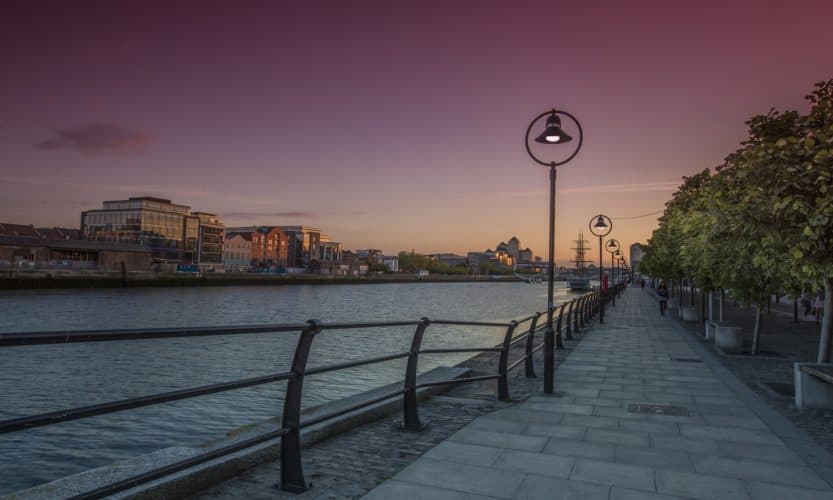
While Ireland is by no means a cheap country to visit, it is possible to visit Dublin on a shoestring budget. The Irish capital was the first destination I ever visited solo, and this comprehensive solo travel guide will give you the best Dublin travel tips to make your trip there the adventure of a lifetime.
If you’re planning your first solo trip and you’re considering Dublin as a destination, you’ve already made a great call. I know how you feel and I know how scary it can be. But I strongly believe that travelling alone can change your life.
My first solo trip was in Dublin, and I made a lot of mistakes while I was there. But still, I believe these mistakes were more due to my lack of experience than to the destination’s welcoming.
Because solo travel in Ireland is amazing.
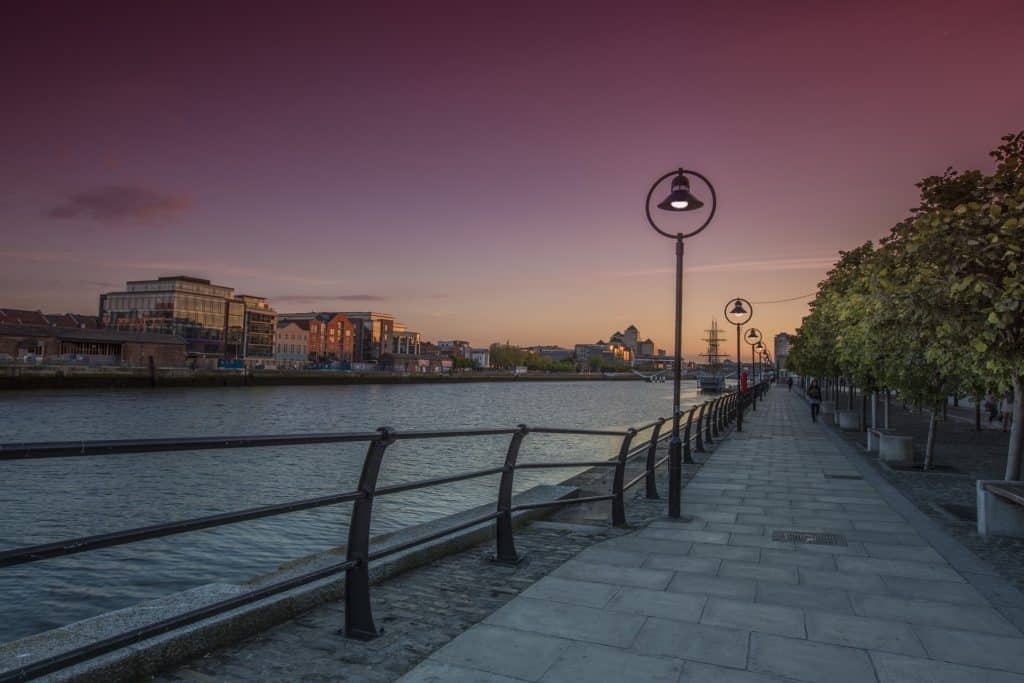
These Dublin travel tips are here to show you why that is and to make sure that you don’t make the same mistakes I did.
Check out the embedded map below for everything that is mentioned in this blog post (or click here if the map doesn’t load correctly):
This Dublin travel guide for solo travellers will consist of the following sections (click through if you’re only interested in a specific topic!):
Dublin Airport is located about 10 km north of the city centre. When you arrive at the airport, you have four main options to get you to the city itself:
Airlink / 747 (express public bus)
Airlink, also known by its route number (747), is an express public bus service operated by Dublin Bus. It’s one of the fastest ways to get from Dublin airport to the city. Buses between the airport and the city centre run up to every 10 minutes. Airlink has main stops at Busaras, O’Connell Street and Heuston.
The fare is covered by the Leap Visitor Card (see below). But if you don’t have that card, a return fare will set you back €10. You can purchase Airlink tickets online, at information desks at the airport, at vending machines outside the bus terminal or in cash, on board the bus.
Aircoach (express private coach)
Aircoach (bus line 700) is an express private coach service that runs between Dublin airport and the city centre. This service tends to be a bit faster than Airlink, but it’s also more expensive. Buses between the airport and the city run every 15 minutes.
Aircoach fares are not covered by the Leap Visitor Card. Tickets for a return trip cost €12 and can be purchased online, at the Aircoach departure desk at Dublin Airport or in cash, on board the bus.
Check the official website for Aircoach timetables.
Dublin Bus (public bus)
This is the cheapest way to get from the airport to the city centre, as a single fare will only cost you €3,30. There are two high-frequency buses (running every 10-30 minutes) from the airport to the city: bus 41 bound for Lower Abbey Street and bus 16 bound for Ballinteer.
The Leap Visitor Card covers this bus, but if you have one, you might as well opt for the Airlink, which has fewer stops along the way. But keep in mind: if you’re taking the Dublin Bus and you’re paying in cash, make sure you have the exact coins! The bus driver is unable to give you any change.
Taxi
If you don’t feel comfortable on a public bus, there’s also this option. Taking a private, metered taxi from Dublin airport to the city costs about €25-30. I wouldn’t recommend this if you’re on a budget, but if you feel like splurging, be my guest. Taxis queue up just outside Terminal 1, Arrivals level.
Although Dublin is the biggest and most populous city of Ireland, it’s still very walkable. Especially if you’re travelling alone and you don’t really have anything else to do, you might as well take a walk.

If you don’t have much time in Dublin – when you’re only there for a layover, for example – it’s a good idea to take a walking tour to explore the city’s main sights. Take a self-guided walking tour of Dublin with this article as a guide, or take a free (tip-based) guided walking tour.
Looking for something more active than walking around the city? Why not rent a bicycle?

The most popular rental bike scheme in Dublin is Dublinbikes. There are 115 docking stations spread around the city, with a maximum capacity of 15 bikes each. Every docking station also comes with a payment terminal, where you can purchase a 3 day ticket.
In order to use the system, you’ll need to take out a subscription. Don’t worry, it sounds more serious than it actually is: a 3-day subscription only costs €5. The first 30 minutes of each journey are free, and a service charge applies after that.
Check Dublinbikes’ official website for more information.
But of course, not everyone wants to walk or feels comfortable walking alone in a foreign city. For those people, there are three main options for public transport in Dublin.
As for payment for the buses, trams and DART in Dublin, there are also three options:
It’s true: the Irish are infamous among Europeans for their drinking culture. Many drinks, like stout (e.g. Guinness) and whiskey (e.g. Jameson) are produced in Ireland, and the Irish are notoriously good at enjoying a drink every now and then.
For that reason, here’s a list of the top pubs in Dublin to have a drink at as a solo traveller. Because what would a list of Dublin travel tips be without drinking recommendations?

Although it’s often been called a tourist trap, I truly believe that the OG Temple Bar is an iconic place to visit when you’re travelling to Dublin. It has a strong reputation for its great atmosphere and live music. And, more importantly, you won’t have any problems striking up a conversation with a stranger as a solo traveller. Just keep an eye on your tab, since staff tend to increase the price of your drinks over time.
Founded in the 12th century, The Brazen Head has a reputation as Ireland’s oldest pub. Live music is played here regularly, so check the website to find out if anyone’s playing when you’re there. Beside their extensive collection of Irish whiskies, gins and vodkas, traditional Irish dishes like beef & Guinness stew and smoked cod are also served at the Brazen Head.
As they describe themselves, Token is a restaurant, bar, retro arcade, pinball parlour and event space – all in one. Obvious highlights here are the retro game machines and pinball lounge in the basement. You can come here for a drink and some games without reservations, but just don’t forget to try some food (check out the extensive vegan and gluten-free options!).
Not to be confused with the Long Hall at Trinity College, the Long Hall pub has been one of Dublin’s best loved pubs since 1766. Often described as ‘an actual traditional Irish pub’, this place is definitely worth some time to enjoy a cold pint of Guinness.
P.Macs (also P’Macs and P.Mac’s) is one of Dublin’s newest pubs, but that doesn’t take away from its appeal. Some keywords here: friendly staff, soft rock, craft beers and candlelit tables. Need I say more?
The Bernard Shaw is more than just another bar – it’s an art space, pizza bus, beer gardens, event space and so much more. Whenever you’re in Dublin, something is on at Bernard Shaw. Not to mention the drinks are cheap and the atmosphere is incredibly vibrant and hip.

Of course, a big part of travelling is finding places to eat. Here’s an overview of the best places to eat in Dublin, sorted by category.
Note: all of these suggestions are great for solo travellers, and they won’t dent your food budget too much.
Here are a few tips on where to stay in Dublin as a solo traveller.
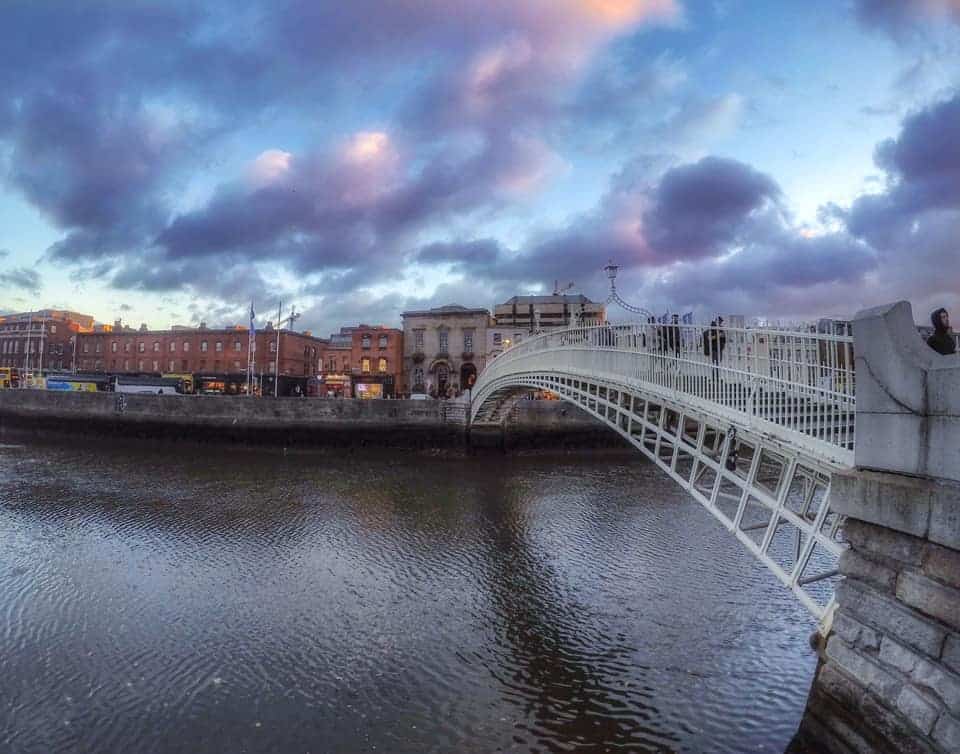
One of my most important Dublin travel tips: don’t stay in Temple Bar.
While many online articles and blog posts will try to convince you that Temple Bar is a great neighbourhood to stay, it’s not true. Especially not for solo travellers. And while these neighbourhoods will likely stay popular among tourists, you can be smarter than that.
For starters, staying in a neighbourhood that is literally the city centre will be expensive. You’ll be paying more than what you’d pay in a neighbourhood that was located slightly outside the city centre.
Secondly, good luck trying to fall asleep to the sound of drunk twenty-somethings and smashing glasses.
If you want to stay in a central location without paying too much, look for places around the canals (Grand Canal to the south, Royal Canal to the north).
This way, you’ll still be at a walkable distance to the centre, but you won’t have any of the drawbacks – like the high prices and the noise.
And, of course, hostels are still a very popular accommodation option for budget solo travellers.
Here’s an overview of some of the best Dublin hostels, keeping in mind the fact that you’re travelling alone and that you’re on a budget.
Although Airbnb might not be the best option for solo travellers – especially not in Dublin, since the tax authorities have been taking note of addresses – you might still be lucky and strike a bargain.
New to Airbnb? Sign up here for up to €30 off your first booking!
It’s definitely still worth checking out the website. Take a look at the following neighbourhoods. They’re a little further outside the centre, but they’re still easy walking distances.
Arguably the most significant Dublin travel tips I could give you are these: how to fill your days in the Irish capital as a shoe string solo traveller.
Here’s an overview of the best museums and tours in Dublin to visit as a solo traveller:

Don’t forget to check the official websites to make sure the museum is open when you want to visit, since many of them are closed on Monday.
But the museums I mentioned above are not the only free things to do in Dublin. There are some other free activities in Dublin worth checking out:

Because a city trip to a place like Dublin can feel quite overwhelming at times, you might need some time to take a breath and unwind. These places are perfect for that:
Don’t visit Dublin around Christmas. Chances are that stores and attractions will be closed on Christmas Day, Boxing Day (26 December), New Year’s Eve and New Year’s Day.
For the best weather, you’ll want to be in Dublin anywhere between May and September, with July and August as the best – but also the most expensive – months.
Now that you know where to stay, where to eat, where to drink, what to do and when to visit Dublin, it’s time for some miscellaneous travel tips about Dublin to make your next adventure that much more unforgettable.
Bring a reusable tote bag. If you intend to do any shopping at all, make sure you have a reusable bag with you. There is a plastic bag levy in Dublin and most retailers only provide heavy-duty bags, which cost a lot.
Let your pint of Guinness settle. If there’s one way that Dubliners pick up outsiders, it’s this. There’s a whole science to pouring the perfect pint of Guinness, and the two-minute settle time (well, 199.5 seconds, actually) is an essential part of it.
Tip 10% in restaurants. Tipping is not as compulsory as it is in places like the United States, but a 10% is expected. If the service you received was exceptional, you could tip 20% or even more.
Take a day trip to Howth. If you’ve still got one day left in your travel itinerary that you have no idea how to fill in, consider a day trip to this nearby fishing village. There are plenty of things to do in Howth!
Check out Guinness’ secret brewery. On Thursday, Friday and Saturday, Guinness operates a ‘secret’ brewery, called Open Gate Brewery, at St. James Gate. Brewers get to experiment with different beer types, ingredients and flavours, and you can also get some food there. You do have to book tickets in advance, though. (Entry ticket + tasting paddle with 4 beer samples: €9)
Now you know why Dublin has been one of my favourite places to travel solo in Europe ever since I stepped foot in the Irish capital.
Are there any Dublin travel tips I missed? Would you add anything else to a Dublin itinerary? Let me know in a comment down below.
Thanks for reading!
-S
Disclaimer: This post contains affiliate links, meaning that if you make a purchase through one of these links, I will receive a small commission at no extra cost to you. Thank you for supporting Ars Currendi!
PIN IT!



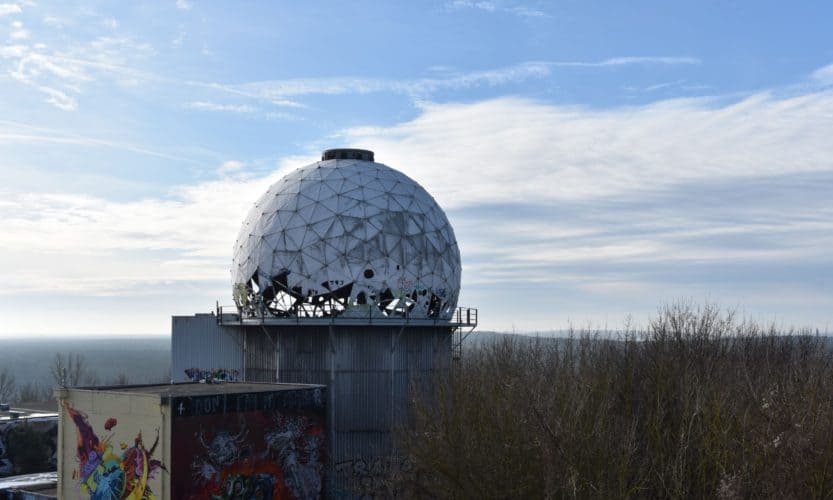
With over 3.5 million inhabitants, Berlin is one of the biggest cities in Europe. Besides heavy traffic and a very well-thought-out public transport system, that means that there is a lot to do here. The reasons why you should visit Berlin will quickly become clear if you keep reading. This is my three-day, off-the-beaten-path Berlin itinerary for solo travellers.
Note: this post will be something between ‘what I did in Berlin’ and ‘what you should do in Berlin’. That being said, if I recommend a hostel, a restaurant, a café or an activity, it’s because I enjoyed it there. But it’s also because that’s what I did. Feel free to use this Berlin itinerary as a starting point and make your own travel itinerary according to your wants and needs.
I was in Berlin in February 2019, from Monday until Friday. However, I didn’t really get to do any things worth mentioning on Monday or on Friday because of my flight times. For that reason, I’m only including three full days in this itinerary.
This 3-day Berlin itinerary will give you a good idea of what to do in Berlin and what you can expect on a trip to the German capital.
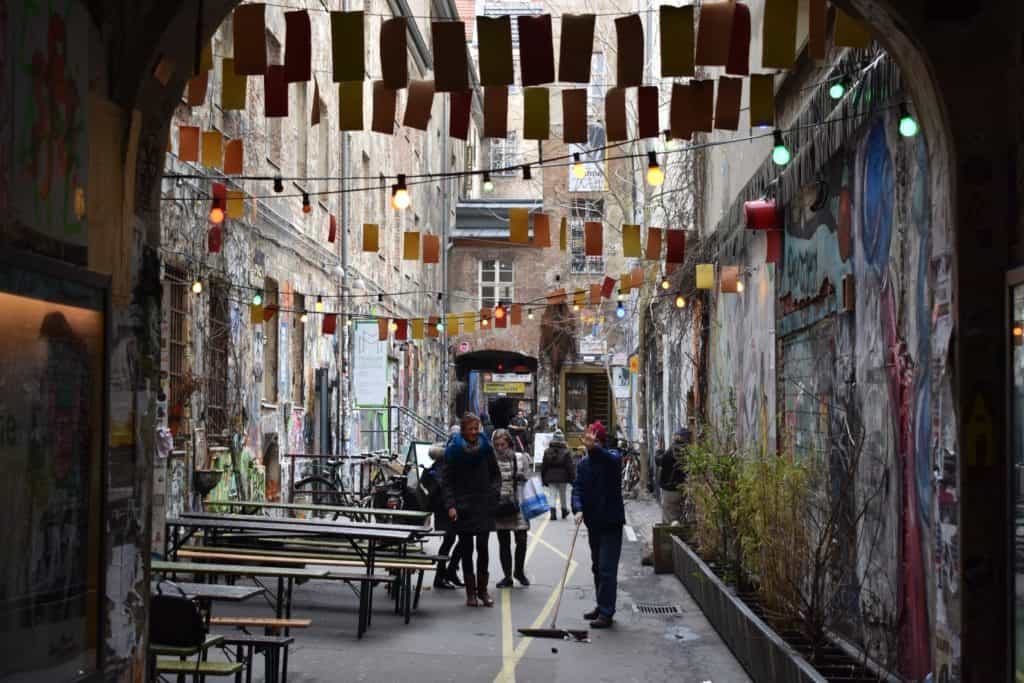
Visiting Berlin off-the-beaten-path doesn’t mean that you can’t visit popular tourist attractions. It just means that you don’t want to spend your entire trip looking at them.
If you’re like me, you’re not fundamentally against popular attractions. You don’t stay away from the Eiffel Tower in Paris or Dam Square in Amsterdam just because many people visit them. After all, there’s a reason why tourist attractions are so popular.
So, since these attractions are still appealing, even when thousands of people lay eyes upon them every day, we’re going to cram the most important sights of Berlin into one day.
Day 1: Morning
After settling into Berlin, you’re going to check out a guided tour of Berlin during the wars of the 20th century.
Day 1: Afternoon
Now it’s time for the bare Berlin essentials. DDR Museum, Bebelplatz, Gendarmenmarkt, Memorial to the Murdered Jews of Europe, Brandenburger Tor and Reichstag Building. It’s going to be a busy afternoon.
Note: I didn’t include Checkpoint Charlie in this day (or anywhere else in this Berlin itinerary) because I personally believe it’s not worth a visit. It’s become too much of a tourist trap recently and it’s supposedly really underwhelming.


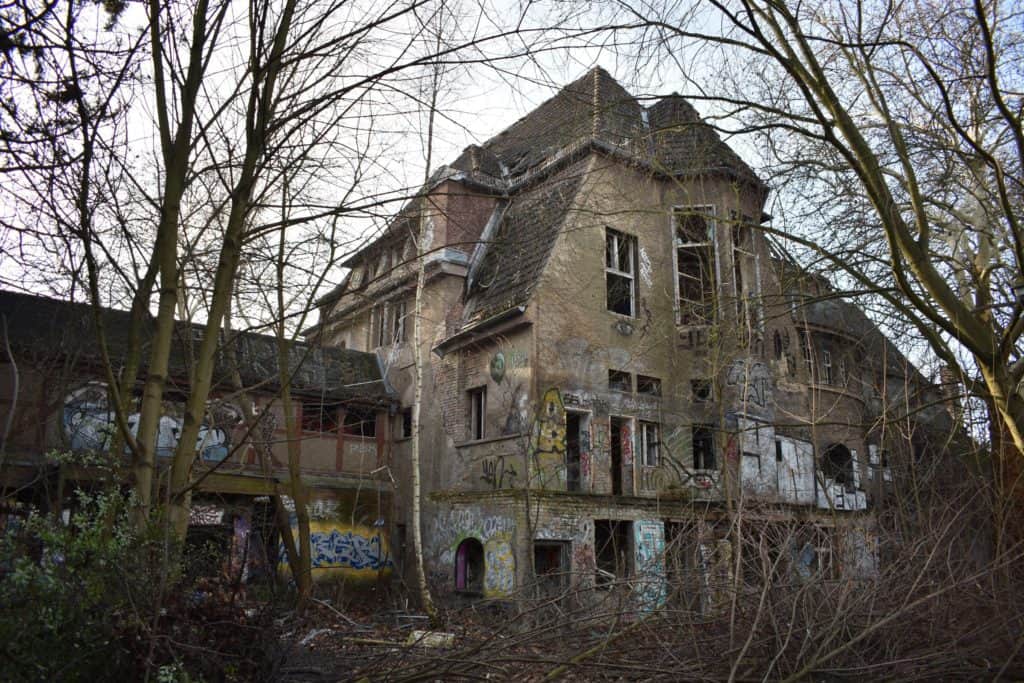
I told you to get up early, right? You’ll see why that is if you just keep reading. But let me tell you: it’ll be worth it.
Day 2: Morning
This morning, your main project is to visit the abandoned children’s hospital Kinderkrankenhaus Weißensee. You might think “But why would I want to visit a place like that?” and the answer is simple. Street art.
Related: Why I decided to visit an abandoned children’s hospital

Day 2: Afternoon
The next things you should be looking forward to are a free alternative walking tour, guided by locals, and an exhibition about the human body.

The last day of this Berlin itinerary will have you exploring some famous abandoned sites in Berlin, as well as checking out an iconic remainder of the Cold War and an indoor street food market.
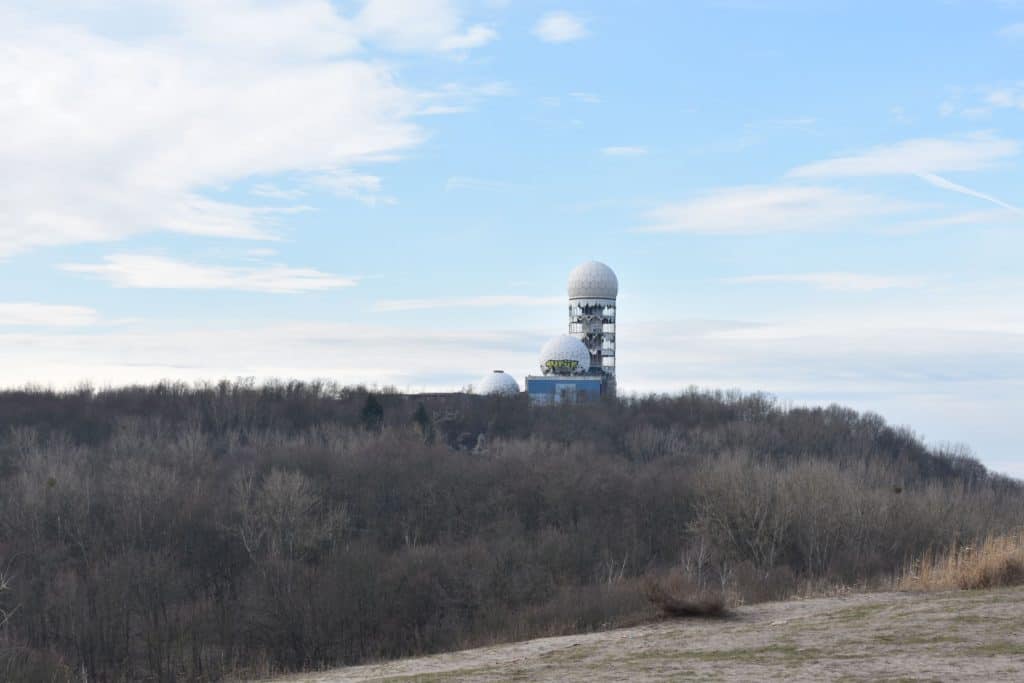
Day 3: Morning

Day 3: Afternoon
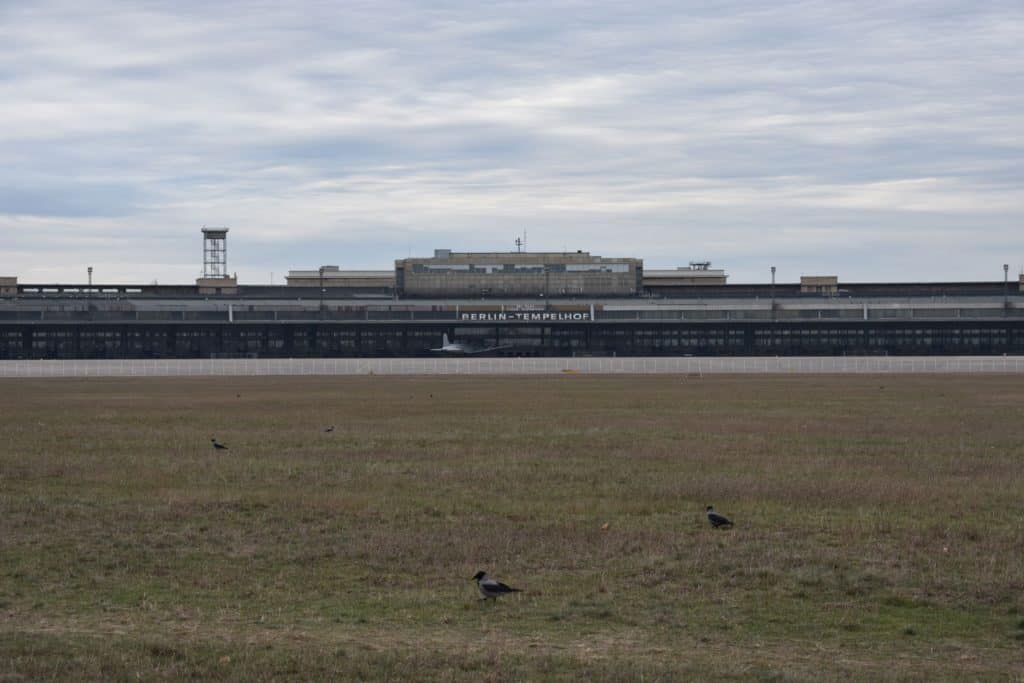

This is the end of my 3-day solo Berlin itinerary. Hopefully, it’s given you some ideas for things to do in Berlin ‘off the beaten track’, because the German capital is more than just Checkpoint Charlie and Brandenburger Tor.
However, a Berlin itinerary is not the only thing I’m giving you in this post. Although you could stop reading right now if you wanted to. I won’t be offended – and I’d likely never find out anyway.
How expensive is a city trip to Berlin? How long should I save up for this trip?
Luckily for you, I kept track of literally all my expenses while I was in Berlin. So, this is not only a Berlin itinerary, but it also gives you an answer to the question “Is Berlin expensive?”
Honestly, it is quite expensive, but Berlin prices tend to be very similar to any other major western European city.
Note: I used an app called Tripcoin to keep track of my expenses. My flight to Berlin touched down at 2:30 pm on Monday and my flight back home departed in Berlin at 11:05 am.
This is everything I spent that had anything to do with my trip to Berlin.
I know this might sound like a lot, but for a 5-day solo city trip to a big city in western Europe, I’d say it could have been a lot worse.
If you want to splurge on a nice hotel and a fancy restaurant, be my guest. If you want to spend as little money as possible, be my guest. The point of travelling solo is that you can do whatever the hell you want to, so I’m not going to sit here and tell you how much money you should spend in Berlin.
I’m just giving you this information so that you can decide for yourself.
There — now you know why Berlin has become one of my favourite cities to spend time alone in Europe.
Have you ever been to Berlin? What did you think of it?
If you haven’t gone to Berlin, would you consider going there? Why (not)?
Thanks for reading!
-S
PIN IT!



Design by NXNW.